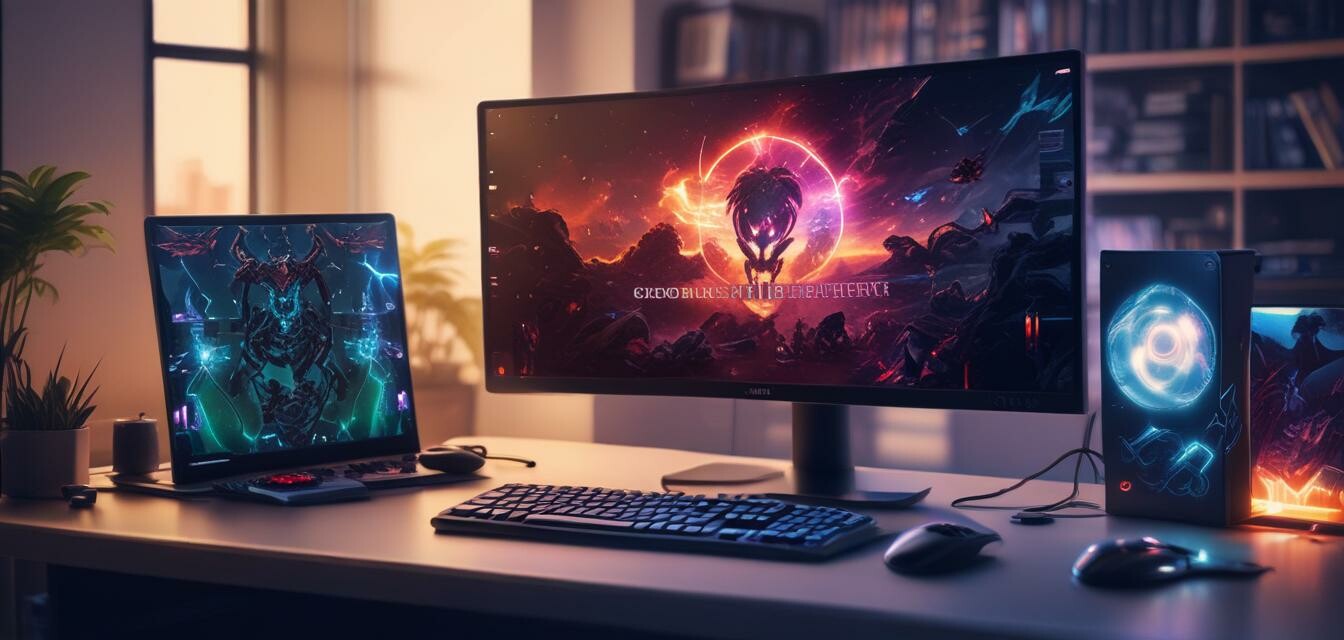
Connecting multiple OLED monitors: A step-by-step guide
Key Takeaways
- Understanding hardware requirements is crucial for a multi-monitor setup.
- Proper connection types affect display quality and performance.
- Software settings can enhance the usability of multiple monitors.
- Troubleshooting common issues can save time and frustration.
Creating an immersive gaming experience can be dramatically enhanced by incorporating multiple OLED monitors into your setup. Whether you're a casual player or a competitive gamer, the right configuration can elevate your gameplay. In this guide, we will walk you through the process of connecting multiple OLED monitors, the hardware needed, and some troubleshooting tips to ensure a smooth and enjoyable gaming experience.
Hardware Requirements
Before diving into the connection process, it’s essential to have the right hardware in place:
| Component | Details |
|---|---|
| Graphics Card | Ensure your graphics card supports multiple displays. Look for specifications related to the maximum number of monitors it can handle. |
| Cables | Depending on the connection types supported by your monitors and graphics card, you may need HDMI, DisplayPort, or USB-C cables. |
| Power Supply | Make sure your power supply can support additional monitors, especially if using high-resolution OLED displays. |
Types of Connections
Different monitors may require different connection types for optimal performance. Here’s how they compare:
| Connection Type | Pros | Cons |
|---|---|---|
| HDMI | Widely used, easy to connect, supports high-definition | May have limitations with refresh rates on certain resolutions |
| DisplayPort | Excellent for high refresh rates, supports daisy chaining | Less common than HDMI, may require adapters |
| USB-C | Versatile, can provide power and data | Not all monitors support it, requires compatible devices |
Step-by-Step Connection Process
- Check your graphics card: Confirm that it supports multiple monitors by checking the specifications.
- Gather your cables: Get the necessary HDMI, DisplayPort, or USB-C cables based on your monitor and graphics card.
- Connect the monitors: Plug the cables into your graphics card and monitors. Make sure each connection is secure.
- Power on the monitors: Turn on your displays to check if they are recognized by your system.
- Adjust settings: Go to your computer's display settings to arrange and optimize your monitors.
- Test your setup: Launch a game to see if everything functions smoothly with your new monitor setup.
Software Settings
After connecting your monitors, you'll want to configure your software for optimal performance:
- Go to your settings and check the display arrangement to match how your monitors are positioned physically.
- Adjust resolution and refresh rates for each monitor separately to ensure they perform at their best.
- If you're using a gaming-focused operating system, explore additional settings that can enhance multi-monitor support.
Troubleshooting Common Issues
If you encounter issues during setup, here are some common troubleshooting steps:
- Monitors not recognized: Check connections and ensure cables are properly seated.
- Screen flickering: Try changing the refresh rate in display settings.
- Resolution issues: Set each monitor to its native resolution through your display settings.
Pros
- Enhanced gaming experience with wider field of view.
- Ability to multitask and have multiple applications open simultaneously.
- Improved graphics and detail with OLED technology.
Cons
- Higher costs for multiple monitors and cables.
- Increased power consumption from multiple displays.
- Potential compatibility issues with older hardware.
Conclusion
Connecting multiple OLED monitors can create a powerful gaming setup that significantly enhances your experience. By understanding the necessary hardware and following the proper connection steps, you can create a visually stunning and efficient workspace or gaming environment. Don't forget to refer to our buying guide for more info on selecting the right monitors for your needs, and feel free to explore our other guides on topics like G-Sync & FreeSync OLED monitors and 4K OLED gaming monitors for additional insights.